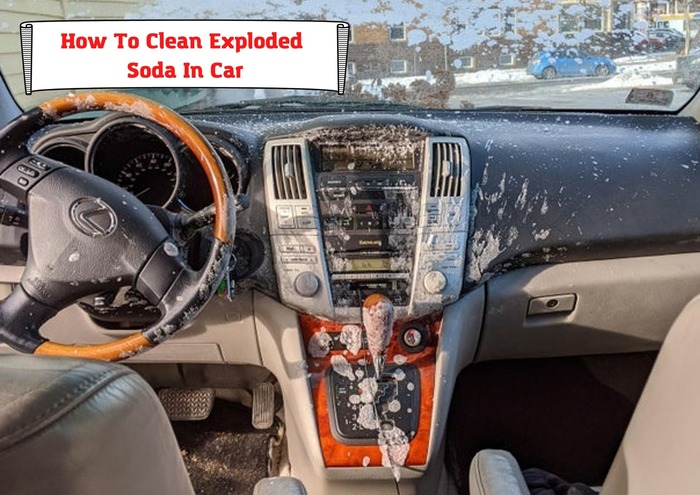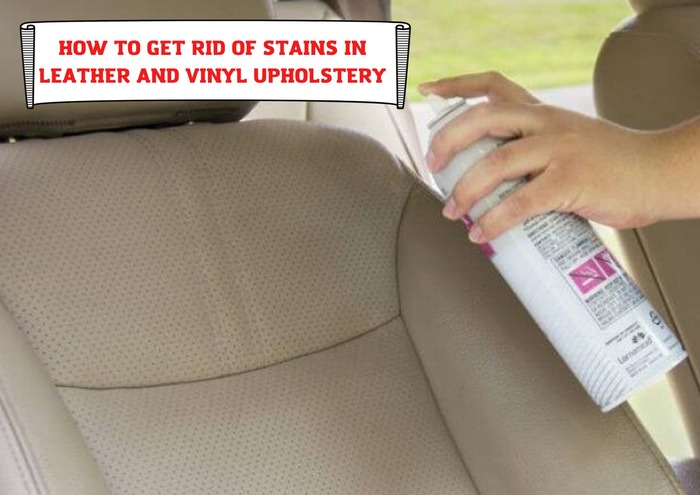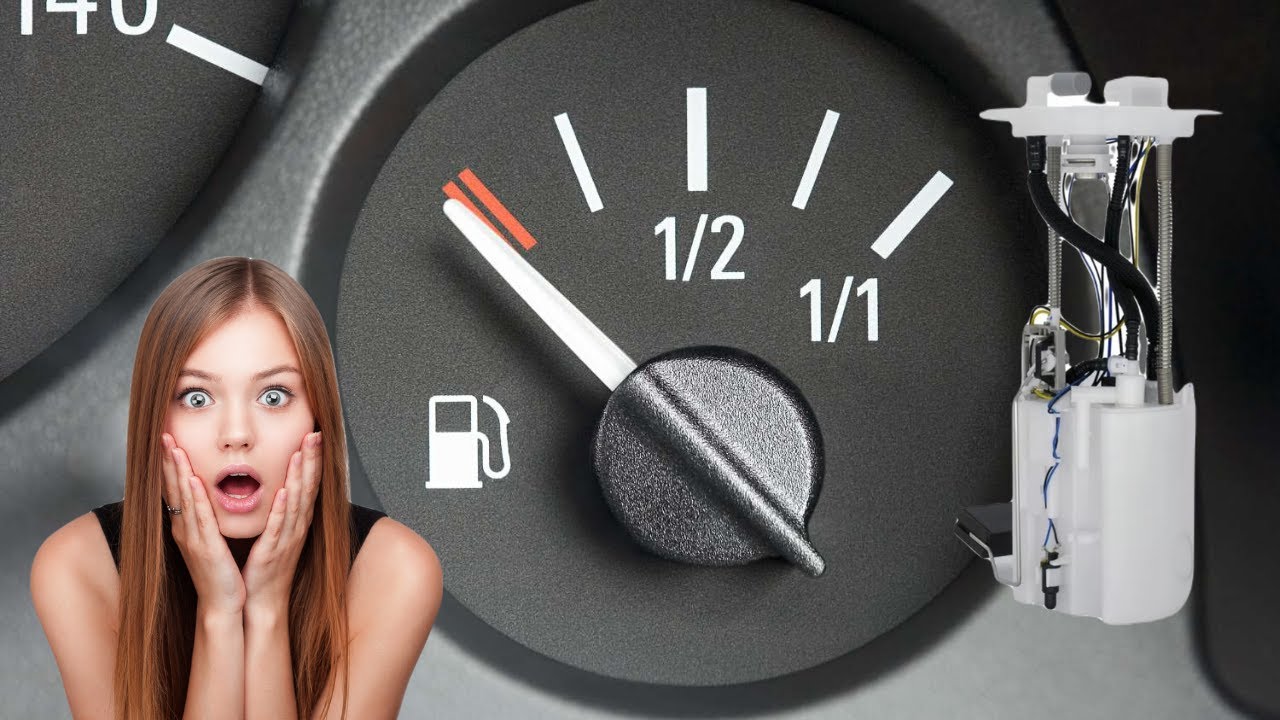
A clean car interior gives a very good feeling and makes sure the resale value of your car is maintained. It is difficult, however, to prevent spills in the car. They just happen. It is important to note that these spills lead to stains that should be cleaned immediately as they tend to become long-lasting.
Your vehicle should be cleaned and stains, no matter how little, should be taken care of as soon as possible. The cleaning method is usually determined by the type of spill you're dealing with as what is best for one type of spill or surface may not work for the other.
In this article, we'll talk about simple tips on how to clean exploded soda in cars. The surfaces discussed include fabric upholstery, leather and vinyl upholstery, and plastic cup holders and sidings.
HOW TO GET RID OF SODA STAINS IN FABRIC UPHOLSTERY
Materials Needed
- Water
- Wash towel
- Baking soda
- Vinegar
- Liquid detergent
- Glass cleaner
Step 1: Dilute with water
If you've just spilled soda in your automobile, take action right away to dilute the stain. Sprinkle lukewarm water over the stain to dampen but not saturate it. Then use a wash towel to dab it.
Adding water to the stain inhibits it from setting and keeps it on the surface of the fabric.
Instead of rubbing the stain, use a blotter. Blotting helps the stain lift, but rubbing pushes the stain further into the upholstery.
Even if the stain is not new, wipe it lightly with water before proceeding to the next step. Although blotting alone will not remove an old stain, it is a useful way to release the stain so that other, more powerful procedures can be used to remove it.
Step 2: Mix baking soda and water
The use of baking soda is one of the most powerful methods of removing soda stains. Mix about 60ml of baking soda with about 235ml of warm water and stir until a white paste is achieved.
Step 3: Apply the paste to the stain
After mixing the baking soda to get a paste, apply to the stain with a toothbrush. With the aid of brushing motions, apply to the areas involved. Thereafter, leave for about 30 minutes.
The bristles of a toothbrush are ideal for working the baking soda paste into the cloth. Allowing it to sit for 30 minutes aids in the penetration of the compound into the fabric.
Step 4: Blot the stain with a clean cloth
After allowing the paste to settle on the fabric, carefully wipe the stain with a wash towel. Wipe the soda and baking soda mixture from the fabric with the use of simple dabbing motions.
Step 5: Make a vinegar, water, and detergent spray
If the stain persists, produce a new cleaning fluid in a plastic bottle. This should be made up of 1ml vinegar, about 3 tablespoons of warm water, and a couple of jets of liquid detergent.
Step 6: Spray the stain with the vinegar solution
Apply the cleaning solution onto the stain with the spray bottle. Vinegar and dish detergent are both effective cleaning solutions for removing stains. Vinegar can also be used to remove stains from sodas that contain strong colors, such as grape or orange soda.
Step 7: Brush and dry the stain
After spraying the stain, massage the cleaning solution into the stain with a scrubbing brush, such as a nail brush. If you don't have any other brushes, you can use a toothbrush. Allow 15 minutes for the solution to rest on the stain after scrubbing. After that, gently wipe the stain with a dry cloth. The stain should be lifted, as well as any extra wetness from the cleaning solution, by wiping.
Step 8: Soak the stain in glass cleaner
If the baking soda and vinegar solutions failed to completely eliminate the soda stains, you'll need to use a more powerful cleaning product. Glass cleaner is a strong cleaner that may be used on both fabric and carpets as well as glasses. Pour sufficient glass cleaner on the blemish to fully cover it, then leave it to absorb for 5 minutes.
Step 9: Blot the stain with a clean cloth
After the glass cleaner has settled, wipe the stain with a clean towel. At this point, all the stains should be totally out. The cloth should be wet and used to wipe all the excess cleaning solution.
HOW TO GET RID OF STAINS IN LEATHER AND VINYL UPHOLSTERY

Materials Needed
- Water
- Wash towel
- Toothpaste
- Isopropyl alcohol
- Cream of tartar
- Lemon juice
Step 1: Blot the stain
Leather and vinyl furnishings are less absorbent than cloth fabric, but they can also be discolored by soda. When the stain appears, dab it with a clean towel as soon as possible to collect as much soda as possible.
If the stain is old, wipe it for a few seconds while it is still moist, then proceed on to other procedures to completely take it out.
Step 2: Add toothpaste to the stain
Toothpaste is an unusual yet extremely efficient leather and vinyl surface cleaner. Apply a small amount of paste onto the stain and gently brush it in with a toothbrush. You should see the stain disappearing and the white toothpaste changing color.
Step 3: Remove toothpaste with a damp towel
After brushing the toothpaste on the spot for a minimum of 15 to 30 seconds, clean the paste with a wet towel, then dab the area to remove any residue.
Step 4: Dab at the stain with isopropyl alcohol
If the toothpaste didn't completely clear the soda stain, you'll need to switch to isopropyl alcohol, a stronger cleaner. Test a small section of your leather or vinyl seat first, then soak a clean cloth in isopropyl alcohol, wring out the surplus, then dab the stain with the moistened cloth.
Because isopropyl alcohol might damage the coloring in leather or vinyl upholstery, it's necessary to run a spot test first.
To check for discoloration, moisten a cloth with isopropyl alcohol and lightly rub at an unnoticeable place. It's safe to apply on the stain if there's no change in color after around 10 seconds of rubbing.
Isopropyl alcohol should not be poured directly on the discoloration. Instead, wipe the alcohol with a moist cloth. Pouring alcohol on leather or vinyl can fade the color or cause the pigmentation to wipe out.
Step 5: Make a solution out of cream of tartar and lemon
You'll need an even stronger cleaner if your stain is extremely old or tenacious. To make an extremely effective cleaner, use equal amounts of tartar and lemon juice.
Step 6: Apply the solution to the stain
Apply the mixture to an inconspicuous part of your seat and let it stay for 10 minutes. Thereafter, wipe it away with a moist cloth. If there is no discoloration after 10 minutes, you can now apply the solution to the stain and leave for another 10 minutes.
Step 7: Wipe away the solution from the stain
After 10 minutes, carefully remove the solution off the stain with a moist cloth. The blemish should be faded or totally gone.
If the stain remains, continue the cycle of administering the solution, waiting 10 minutes, and wiping it away until it disappears. Then, using a wet towel, clean the previously soiled area and allow it to dry.
To remove stains from leather, use a leather cleaner and a horse hairbrush. This brush will penetrate the leather's pore spaces, making it much easier to remove the stain.
HOW TO GET RID OF STAINS IN PLASTIC CUP HOLDERS AND SIDINGS
Materials Needed
- Cleaning spray
- Toothbrush
- Wipes
- Glass cleaner
Step 1: Use cleaning spray to clean cup holders
If there is a spill into your vehicle's cup holders, get a cleaner designed particularly for automotive plastic interiors. Spray this cleanser into the racks, then use a toothbrush to scour away at the stains. After cleansing, fill the cup holder with paper towels or a clean cloth and gently wipe the cleaning product along with the stain.
You can also use a multi-purpose cleaning solution if you are unable to get a car cleaner. This can be made with an equal amount of water and vinegar. However, when you use this for old stains, you will have to repeat the cleaning cycle a lot of times to totally take out the stain.
Step 2: Spot clean the cup holders with a baby wipe
After the first cleaning, there may still be some spots in the cup holders. To clean them, use baby wipes to dab the stains repeatedly until it goes off.
Step 3: Use glass cleaner to clean plastic car sidings
You can use an ammonia-free glass cleaner to eliminate stains from soda spills. Apply some jets of the cleaner into a small cloth and dab the stain. You mustn't use a cleaner containing ammonia as this may discolor the plastic.
About the authors
The CarAraC research team is composed of seasoned auto mechanics and automotive industry professionals, including individuals with advanced degrees and certifications in their field. Our team members boast prestigious credentials, reflecting their extensive knowledge and skills. These qualifications include: IMI: Institute of the Motor Industry, ASE-Certified Master Automobile Technicians; Coventry University, Graduate of MA in Automotive Journalism; Politecnico di Torino, Italy, MS Automotive Engineering; Ss. Cyril and Methodius University in Skopje, Mechanical University in Skopje; TOC Automotive College; DHA Suffa University, Department of Mechanical Engineering






Add comment